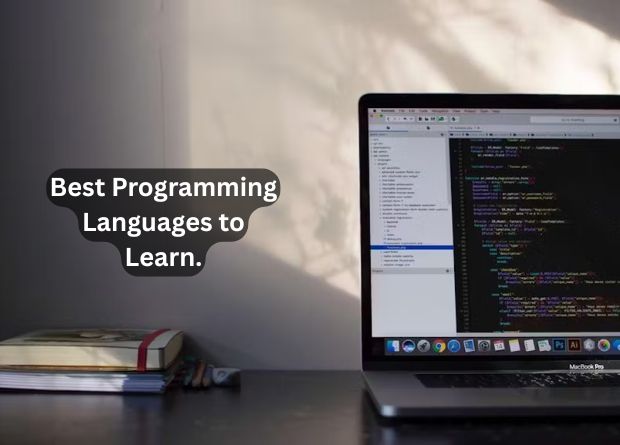Learning to program opens up a world of possibilities—from building websites and apps to automating business tasks or analyzing large sets of data. But with hundreds of programming languages available, many beginners are left asking the same question: Which language should I learn first?
The answer depends largely on what you want to do. Below is a breakdown of the best programming languages based on specific goals or tasks to help you make an informed decision.
1. Web Development Programming Languages
If you want to build websites or web applications, you’ll need to learn languages that work well on both the front end (user interface) and the back end (server-side logic).
Front-End Development
-
HTML: Not a programming language, but essential for structuring web pages.
-
CSS: Also not a programming language, but necessary for styling.
-
JavaScript: The most important language for interactive websites.
Back-End Development
-
JavaScript (Node.js): Enables you to build both the front and back end using the same language.
-
Python: Known for its simplicity and powerful frameworks like Django and Flask.
-
PHP: Still widely used, especially with platforms like WordPress.
-
Ruby: Popular for startups using the Ruby on Rails framework.
2. Mobile App Development Programming Languages
Building apps for smartphones and tablets? You’ll need languages suited for Android and iOS platforms.
Android Development
-
Kotlin: Official language for Android; concise and modern.
-
Java: Still widely used and has a massive ecosystem.
iOS Development
-
Swift: The go-to language for building iOS apps, supported by Apple.
Cross-Platform Development
-
Dart (Flutter): Lets you build apps for both Android and iOS with one codebase.
-
JavaScript (React Native): Another strong cross-platform choice.
3. Data Science and Machine Learning
If your goal is to analyze data, build predictive models, or work with AI, focus on languages with strong data libraries.
-
Python: The undisputed leader in data science. It has powerful libraries like NumPy, Pandas, scikit-learn, and TensorFlow.
-
R: Excellent for statistics and data visualization.
-
Julia: Designed for high-performance numerical computing; gaining popularity in academia.
🔗 Explore more: Python for Data Science
4. Game Development
To build video games—from indie 2D games to AAA 3D experiences—you’ll need performance-oriented languages.
-
C++: Used for game engines like Unreal Engine. Fast and powerful, though challenging for beginners.
-
C#: Main language for Unity, one of the most popular game development platforms.
-
JavaScript: Works well for browser-based games (e.g., with Phaser).
5. Automation and Scripting
Want to automate repetitive tasks or write small programs that save time?
-
Python: Perfect for automating file management, scraping websites, sending emails, and more.
-
Bash: Great for writing shell scripts on Linux/macOS.
-
PowerShell: Windows-based scripting for IT professionals.
🔗 Learn more: Automate the Boring Stuff with Python
6. Cybersecurity and Ethical Hacking
If you’re interested in cybersecurity, penetration testing, or ethical hacking, focus on low-level languages and scripting tools.
-
Python: Used for building security tools and automating scans.
-
C/C++: Important for understanding system-level vulnerabilities.
-
JavaScript: Crucial for web security analysis.
-
Ruby: The backbone of tools like Metasploit.
7. Embedded Systems and IoT
Working with microcontrollers or smart devices? These require languages close to the hardware.
-
C: Lightweight and highly efficient; used in Arduino and other microcontroller platforms.
-
C++: Adds object-oriented features to C, useful in more complex projects.
-
MicroPython: A version of Python optimized for embedded systems.
🔗 Arduino reference: https://www.arduino.cc/reference/en/
8. Finance and Fintech
Programming in the financial world often involves data modeling, algorithmic trading, and high-frequency systems.
-
Python: Dominant due to libraries like pandas, QuantLib, and PyAlgoTrade.
-
R: Preferred for quantitative analysis and time-series modeling.
-
Java: Used in large-scale, high-performance financial systems.
-
SQL: Essential for working with financial databases.
9. Artificial Intelligence & Deep Learning
AI requires not only data processing but also powerful tools for building complex models.
-
Python: Once again, Python leads with frameworks like Keras, PyTorch, and TensorFlow.
-
Lisp: Historically significant and still used in academic AI research.
-
Java: Offers tools like Deeplearning4j.
10. Enterprise and Backend Systems
Large corporations often run backend systems that require robust, scalable languages.
-
Java: Used in banking, enterprise systems, and Android development.
-
C#: Ideal for Windows-based enterprise applications, especially with the .NET ecosystem.
-
Go (Golang): Developed by Google; great for concurrent systems and APIs.
-
Rust: Gaining traction for its safety and performance in backend services.
Choosing the Right Language for You
Here are some simple guidelines if you’re still undecided:
-
Start with Python if you’re completely new. It’s simple, versatile, and in-demand.
-
Choose JavaScript if you want to build websites and web apps.
-
Go with Swift or Kotlin for mobile app development.
-
Pick C or C++ if you’re interested in hardware or game development.
-
Use R or Julia if your path lies in data analytics and statistical modeling.
Also Check
- Why Cybersecurity Matters More Than Ever
- Top 10 AI Tools for Finance Leaders
- How to Speed Up a Slow Laptop
- 7 Tech Gadgets Every Home Office Needs
- Android vs iOS: Which One Wins in 2025?
Final Thoughts
No programming language is “better” than another universally—it all comes down to your goals. Each language has strengths and ideal use cases. What’s important is to pick a language that aligns with what you want to build or explore.
Start with one, master the basics, and keep learning. Once you’ve built your confidence, you can always pick up more languages as your interests evolve.
